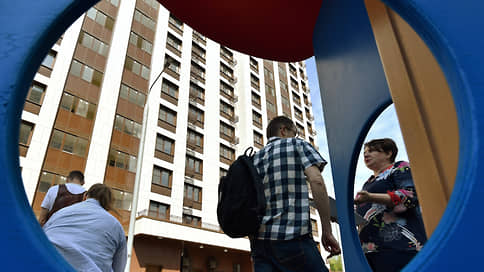Average rates on mortgage programs of banks came close to 14% per annum
[ad_1]

Average rates on mortgage programs of banks came close to 14% per annum. Over the summer months, growth amounted to 2–2.4 percentage points (pp), accelerating in the second half of August after the key rate hike. The achieved indicators are significantly higher than the comfortable values that borrowers are already accustomed to. Therefore, experts expect a reduction in demand for mortgage programs of banks, and primarily for secondary housing. However, it is compensated by the expansion of limits on preferential state programs, primarily for new buildings, for which rates are two times lower.
By the beginning of autumn, the average level of rates on mortgage programs of Russian banks came close to 14% per annum, according to data from the Rusipoteka company, which Kommersant got acquainted with. The statistics include banks that occupy about 90% of the market, we are talking about “offer rates”, and not actually issued.
In particular, as of September 1, the average rate in the primary market reached 13.99% per annum, in the secondary market – 13.94% per annum, refinancing – 13.89% per annum. For three months, the growth amounted to 2–2.4 p.p.
According to Rusipoteka’s chief expert Sergey Gordeiko, the index includes mortgages with a down payment of 30%, so for other loans, the terms of which require a lower installment, the rates are even higher. At the same time, according to the head of the financial analytics center of Sberbank Mikhail Matovnikov, at the moment not all banks have adjusted mortgage rates, although most market participants have updated their rates.
In general, for about a year, the Ruizpoteka rate index held out without sharp fluctuations, but since August the indicator has gone up sharply.
Growth accelerated after an unscheduled increase in the key rate to 12% per annum in mid-August (see “Kommersant” dated August 16). “Mortgage rates were rising even before the key rate increase due to the growth in the yield of long-term OFZs, which are a benchmark for most long-term loans,” said Mr. Matovnikov. In particular, in June-August, the increase in the value of the zero-coupon yield curve for 10-year government bonds amounted to 0.6 percentage points, for 15-year OFZs – 0.2 percentage points.
Prior to the rise in rates, the volume of mortgage lending grew at a high rate. According to the Central Bank and JSC Dom.RF, over the seven months of 2023, banks issued almost 1 million loans worth 3.69 trillion rubles. According to VTB, in August the volume of loans issued amounted to 800 billion rubles.
However, the rise in rates will clearly reduce the demand for banking products.
Moreover, “for the past few years, there has been a clear trend towards a decrease in a comfortable interest rate against the backdrop of a reduction in inflation, as well as the actions of state programs,” Anton Pavlov, deputy chairman of the board of Absolut Bank, notes. So, if earlier it was possible to talk about a psychologically comfortable level of 12% per annum, then in the last couple of years this value was about 10% per annum, he points out.
According to Mr. Matovnikov, an increase in rates by 1 percentage point on average reduces the demand for loans by 15%. And first of all, the rise in the cost of mortgages will hit the secondary market, where there will be a significant decrease in demand. “However, given that banks have scored a record volume of applications at the old rates, this will not be felt in August or September, but most likely in October,” the expert believes.
Demand in the primary market is mainly formed due to preferential programs. In particular, according to JSC Dom.RF, in the last week from August 24 to August 31, loans under the program for new buildings at 8% exceeded 60 billion rubles, reaching the maximum volume this year and the second result in the entire history of the program. Rates on preferential mortgages subsidized by the state are about half those on banking programs. In particular, according to JSC Dom.RF, at the beginning of September, the average rate under the mortgage program for new buildings was 7.57% per annum, for family mortgages – 5.54% per annum. On market terms, loans are taken by those who did not meet the limits on amounts within the framework of state programs.
Further dynamics of rates will depend on measures to regulate monetary policy, Anton Pavlov notes.
If the key rate is increased, then the rates on credit programs will also increase. If the Central Bank decides on a new increase in the key rate at the next meeting, then it will be possible to see mortgage rates for basic programs at the level of 15-16% per annum, says Irina Babina, chief analyst at the Mortgage Products Department of Rosbank. While maintaining the key rate at 12%, mortgages will remain around 14%, she believes.
“The result will be a significant reduction in lending under market programs and a reorientation of demand to the segment of new buildings, where government programs with subsidized rates operate,” Mr. Pavlov believes. The share of government programs in mortgage lending could eventually reach 80% by the end of the year, he expects. Moreover, at the end of August, the government expanded the volume of issuing preferential state programs by a total of another 1.9 trillion rubles. The current limits, according to Mr. Gordeiko, would be completely exhausted within two months. As stated in the Ministry of Finance, “preferential programs continue to operate on the same terms, changes in rates for preferential mortgage programs are not planned.”
[ad_2]
Source link





